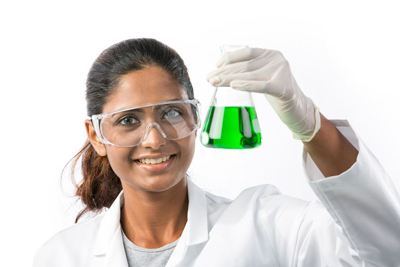 Addressing the need for a coatings laboratory requires careful consideration of the type of capabilities your company needs for the various services offered. In the first part of this article, we discussed an approach for a small business looking to develop laboratory capabilities and a larger business expanding their competencies. But the costs associated with the expansion of existing capabilities are very different from a grass roots undertaking.
Addressing the need for a coatings laboratory requires careful consideration of the type of capabilities your company needs for the various services offered. In the first part of this article, we discussed an approach for a small business looking to develop laboratory capabilities and a larger business expanding their competencies. But the costs associated with the expansion of existing capabilities are very different from a grass roots undertaking.
As a consultant, I have used with great success the approach in the second scenario presented here. This is by no means a complete list or a recommendation. Rather, it’s meant to be used to assist you as you begin your exploration of the issues surrounding setting up a laboratory from scratch.
Scenario #2: Setting Up A Lab from Scratch
The most important aspects of the commission of a new lab are Environmental, Health and Safety (EH&S) and Occupational Safety and Health Administration (OSHA) considerations, as well as lab certification. 35 years ago, the first two were not as significant as they are today. All reputable and law-abiding labs follow OSHA and EPA to protect both workers and the environment.
Looking for materials for your coatings formulations?
Prospector has listings for thousands of materials from global suppliers. View technical data, request samples and more now.
Get Material Data
The first battery of questions:
- Are you capable of maintaining a safe environment and qualified to handle chemicals?
- Will you have the means to dispose of waste materials in accordance with the applicable laws?
- Will you have adequate personal protection equipment (PPE), as required by the law and all required MSDS’ on file for all of the chemicals in use?
- Will you have satisfactory ventilation and air filtration? Adequate space for hazardous and flammable materials storage?
- Who will train the employees and annually maintain records that they have both received training and have adequately learned the material?
At any company that has handled chemicals over a period of time the answers had better be a resounding “yes!” It is a minimum requirement to operate safely and in accordance with the law. Chemical, industrial and mechanical engineers will have designed the lab to be operated and maintained safely.
But if you are considering setting up a lab from scratch, how do you address these components?
You will need to be in a commercial zone, so that eliminates working from your residence with a designated lab space.
Once you get past the regulatory aspect, there is the cost of equipment, the maintenance of the equipment, and if you decide to be a certified lab, the upfront cost and maintenance fees to do so. Unless the development and testing of formulations will be at least half of your business operations, I would dissuade someone from doing this. Instead, consider subcontracting work to an existing lab, or merging with the established entity if it’s feasible and a good fit for both parties.
In summary, looking back at part one, the three factors that are key to determining whether to expand a current lab are:
- Frequency of performing the test
- Cost constraints
- Space constraints
For a grass roots effort, two of the three remain the same, but safety is an extremely important consideration. The three factors here are:
- Safety
- Cost constraints
- Space constraints
And the most important reasons to outsource to a lab with certified testing are:
- Capital avoidance
- Credibility of results for a raw material supplier to a coatings manufacturer
- No additional human capital required (people)
An Internet search will reveal many companies who specialize in coatings testing. Some of these laboratories include: Marshall Laboratories, Inc. in Clearwater, FL, 1st Source Research in Raleigh, NC and Colorado Photopolymer Solutions. In addition, there is a new lab opening in South Boston, VA; ChemQuest Technology Institute.
The views, opinions and technical analyses presented here are those of the author or advertiser, and are not necessarily those of ULProspector.com or UL Solutions. The appearance of this content in the UL Prospector Knowledge Center does not constitute an endorsement by UL Solutions or its affiliates.
All content is subject to copyright and may not be reproduced without prior authorization from UL Solutions or the content author.
The content has been made available for informational and educational purposes only. While the editors of this site may verify the accuracy of its content from time to time, we assume no responsibility for errors made by the author, editorial staff or any other contributor.
UL Solutions does not make any representations or warranties with respect to the accuracy, applicability, fitness or completeness of the content. UL Solutions does not warrant the performance, effectiveness or applicability of sites listed or linked to in any content.



Good introduction and lab set up for formulation
Thanks.
We appreciate your inquiry on whether the lab would have enough filtration and ventilation. My office is a food production facility with a food testing laboratory. We wish to renovate our workplace to make it larger and to include a more secure lab. I plan to employ a laboratory design consultant to assist me in creating the greatest lab design possible, complete with correct air ventilation and filtration.